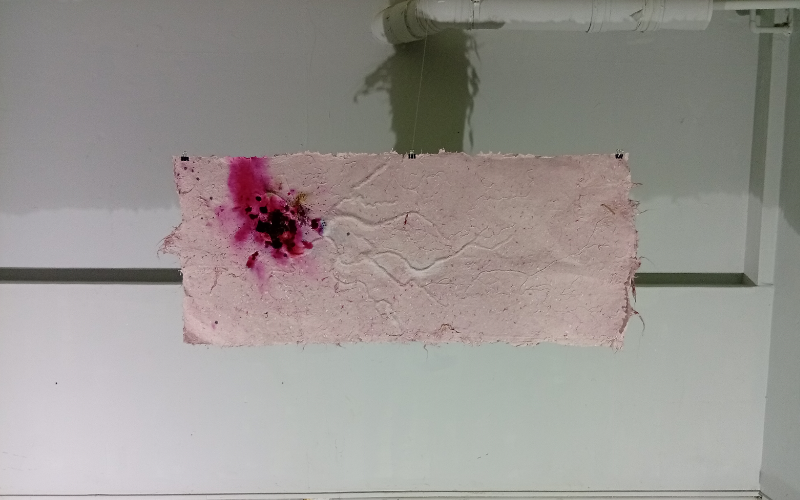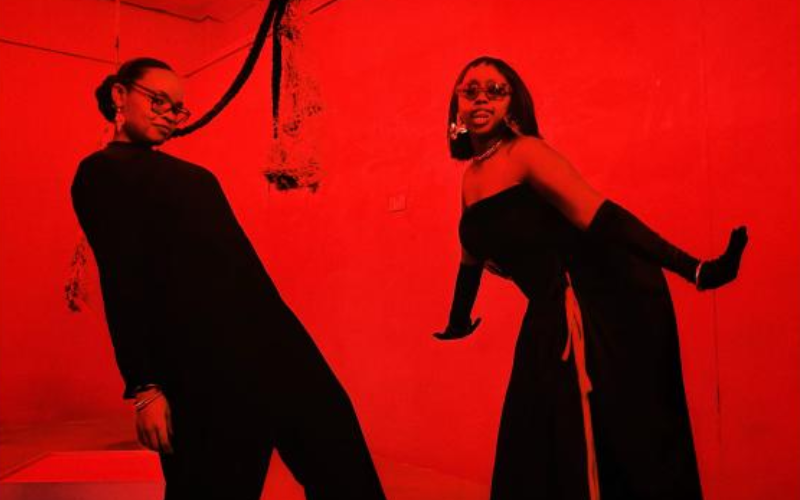An evocative exhibition titled ‘The Unfurling of My Abject Rage’ opened at Munyu Space, Nairobi, last weekend.
It will run until 7 August.
This collaborative mixed media showcase by Chela Yego and Cynthia Nyakiro delves deep into the emotions of rage.
The two artists purposefully utilised soft and fragile materials such as handmade paper, hair, and flower petals to create a contrast in conveying the intense weight of rage.
They also examined the link between abjection and rage, referencing the book Powers of Horror by Julia Kristeva.
In their research and art-making, they realised that people are inherently both fascinated and repulsed by rage and horrific incidents.

“When there’s an accident, people usually congregate at the scene even though the sight of blood is horrific. Abject rage, for me, is getting to the extreme— to the edge of anger—where the whole being is destabilised,” Nyakiro explains.
The duo worked together from scratch to the final form, blending their artistic practices as collage artists by using old blankets to create large handmade papers.
They also mixed discarded materials such as fibres, newspapers, and linens to create pulp, which they layered onto the handmade papers suspended from the gallery ceiling.
“We use soft materials to show rage in a way that embraces both creation and destruction, fragility and force. We mixed the materials together to create pulp to layer on the papers,” Chela explains.

In the second room of the gallery, there are more pieces featuring newspapers layered with fibre, hair, and bandages, accompanied by red paintings.
This room evokes a ghastly feeling, with glaring red lights.
There is also a sound installation featuring Chela and Nyakiro in states of rage, which adds to the intensity.
In it, we hear painful laughter, screams, silence, and mumbling voices—all different expressions of rage.

Here, the artists referenced the Nandi tradition of women unleashing rage whenever a man committed a heinous act against a woman.
“The women would strip naked in the middle of the night, go to the man’s boma, eat his cows raw, and chant sounds. This is one of the many instances where women have removed clothes as an act of rage, like Wangari Maathai. As communities, we had strong ways to express rage,” Chela says.
The final piece is a video installation created by artist Seko Fred, documenting their creative process.
The exhibition has been a cathartic experience for both artists, with Nyakiro saying it has made her feel more emotionally grounded.

“I’ve learnt to express anger from a healthy point of view instead of letting it fester in the background and then explode at some point. I’ve learnt to address it in the moment and move forward. I’ve also realised that rage isn’t a wrong emotion; it can be destructive or liberating depending on how we handle it,” Nyakiro says.
“We want the audience to derive their own interpretations and react in their own way—to think about rage. Our work is subjective; it conjures a range of emotions. I don’t know who the clients will be, but anyone who resonates with the work can buy it,” says Chela.


